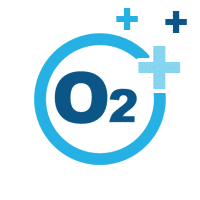Brain Damage
Brain damage is an injury that causes the deterioration or destruction of brain cells. Brain damage includes both Traumatic Brain Injury (TBI), caused by an external force, and Acquired Brain Injury (ABI), occurring at the cellular level. The severity of damage can vary based on they type of injury, but can range from headaches, confusion, and memory problems, to more severe cognitive, behavioral, and physical disabilities.
Benefits of Hyperbaric Oxygen Therapy for Brain Damage:

Increases Amount of Oxygen in the Blood
Stimulates development of new blood vessels from pre-existing vessels as well as the natural development of new blood vessels.

Reduces Inflammation & Swelling
Suppresses the cellular activity of the immune system which triggers swelling when an injury or damage to the body occurs. While this reaction is meant to start healing and protect from injury it can result in secondary injury, pain, and prolonged recovery time.

Preserves, Repairs, & Enhances Cellular Functions
Boosts cellular metabolism, promotes rapid cell reproduction, and enhances collagen synthesis. Collagen is a protein in connective tissues like skin.
Key Research on Hyperbaric Oxygen Therapy for Brain Damage
Recent News on Hyperbaric Oxygen Therapy for Brain Damage
Dr. Maroon’s Personal Experience with Hyperbaric Oxygen Therapy
My Personal Journey to Florida’s Aviv Hyperbaric Clinic – By Joseph C. Maroon, MD, FACS* In 1513, Spanish explorer Juan Ponce de León, traveled to Florida seeking the Fountain of Youth. Legend has it that magical waters, from a special spring, could reverse the aging...
The VA Should Consider Hyperbaric Oxygen as a Worthwhile Treatment
From Military Times Commentary by Tommy Tuberville Army Capt. Kyle Salik is the first patient to receive oxygen therapy at the new Undersea & Hyperbaric Medicine Clinic at Brooke Army Medical Center June 20, 2017. (Robert Shields/Army) The COVID-19 pandemic...
Healing Arizona Veterans sponsors hyperbaric oxygen therapy for eligible vets
After being knocked unconscious four times due to Marines deployment to Iraq and Afghanistan, Armando was living life with a traumatic brain injury and post-traumatic stress disorder. His diagnosis of post-concussion syndrome, and an autoimmune disease from toxic...
Related Indications
Schedule a Consultation
Additional Research
Baseline EEG abnormalities in mild traumatic brain injury from the BIMA study.
The Brain Injury and Mechanisms of Action of HBO₂ for Persistent Post-Concussive Symptoms after Mild Traumatic Brain Injury (BIMA), sponsored by the Department of Defense, is a randomized, double-blind, sham-controlled trial of hyperbaric oxygen (HBO₂) in service members with persistent post-concussive symptoms following mild TBI, undergoing comprehensive assessments. The clinical EEG was assessed by neurologists for slow wave activity, ictal/interictal epileptiform abnormalities, and background periodic discharges. There is scant literature about EEG findings in this population, so we report baseline clinical EEG results and explore associations with other evaluations, including demographics, medication, neurological assessments, and clinical MRI outcomes. Seventy-one participants were enrolled: median age 32 years, 99% male, 49% comorbid PTSD, 28% with mTBI in the previous year, 32% blast injuries only, and 73% multiple injuries. All participants reported medication use (mean medications = 8, SD = 5). Slowing was present in 39%: generalized 37%, localized 8%, both 6%. No other abnormalities were identified. Slowing was not significantly associated with demographics, medication or neurological evaluation. Participants without EEG abnormalities paradoxically had significantly higher number of white matter hyperintensities as identified on MRI (p = 0.003). EEG slowing is present in more than one-third of participants in this study without evidence of associations with demographics, medications or neurological findings.
Baseline neurological evaluations in a hyperbaric trial of post-concussive syndrome.
Abstract: Standard neurologic examinations may not detect abnormalities in U.S. military service members with persistent post-concussive symptoms following mild traumatic brain injury. The Brain Injury and Mechanisms of Action of Hyperbaric Oxygen for Persistent...
Hyperbaric oxygen for persistent post-concussive symptoms: long-term follow-up.
Abstract: We report results of an observational cohort study investigating long-term follow-up in participants from two completed United States military trials of hyperbaric oxygen (HBO₂) for persistent post-concussive symptoms (PCS), as well as challenges in...
